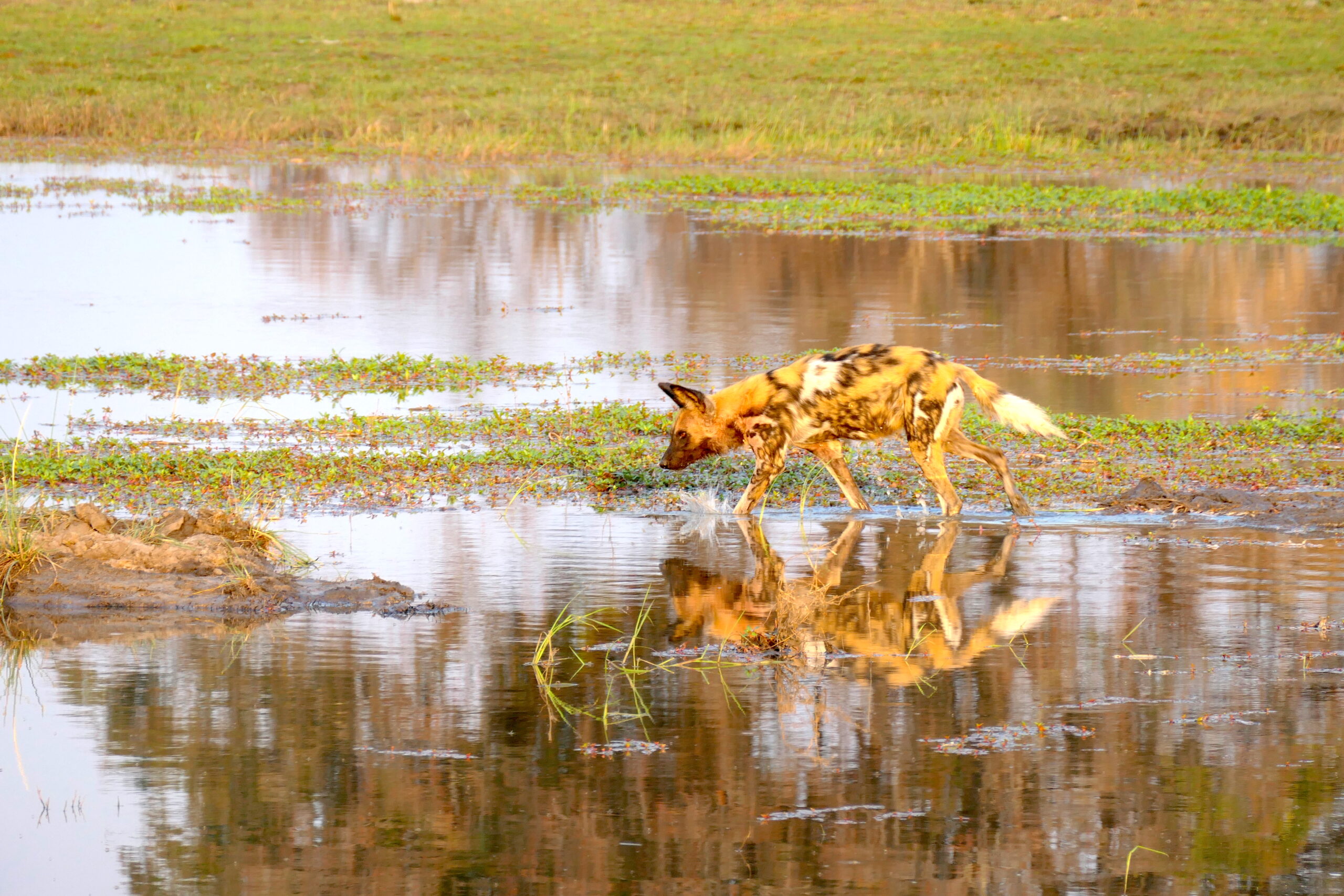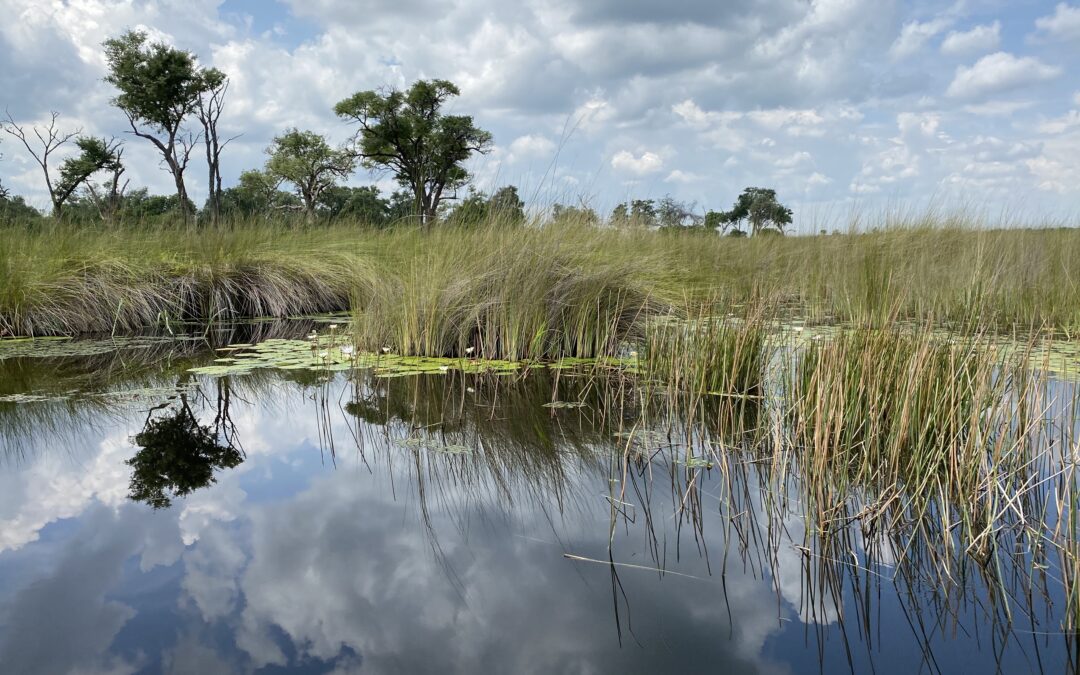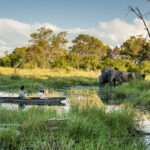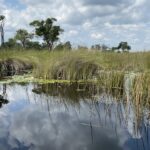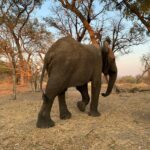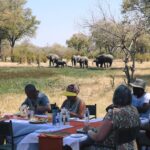One of the things that makes a Botswana safari so unique is the Okavango Delta. Known as “the river that never meets the sea,” the Delta is an incredible, ever-changing floodplain that you have to experience to believe. It is different every season and a surprise from year to year, making every Botswana safari a unique experience.
So, let’s talk about the Okavango Delta for your 2024 Botswana safari.
- How the flood works.
- What you can expect.
- The best time to visit.
- Why floodplains make the best safari experience.
All About the Okavango Delta

The Okavango Delta is an extensive inland delta system located in north-western Botswana. It is one of the world’s most pristine and untransformed wetland systems. As a uniquely adaptable ecosystem, you’ll find a remarkable habitat with incredible species diversity and ecological resilience.
Approximately 600,000 hectares (6000 KM) and up to 1.2 million hectares (12,000 KM) of seasonally flooded areas. The Unesco World Heritage Convention designates 2.28 million hectares to the Delta in total area. So, suffice it to say, it’s massive.
Known as an endorheic delta, the Okavango has no sea outlet. Instead, its waters drain into the Kalahari Basin and its desert sands. As a result, the dry Kalahari Desert habitat is home to a nutrient-rich and sustainable ecosystem. This miraculous area is beautiful and home to a diverse range of species.
Thanks to the amazing ebb-and-flow of the Okavango Delta’s water system, there is no limit to the spectacular wildlife displays you can see on your 2024 Botswana safari. There’s a chance for everything from large herds of African elephants, buffalo, zebra, and red lechwe to hyena clans, lion prides, and wild dog packs.
The Delta’s habitat includes:
- 1061 species of plants
- 89 fish
- 64 reptiles
- 482 species of birds (including 24 globally threatened birds)
- 130 species of mammals (including the world’s largest population of elephants)
Seasonal Rains in Angola & the Annual Flood Tide.
Every year, the Okavango Delta relies on the rainy season in Angola (October – April) for its flood waters. Even though Angola is not a border-sharing country, it is the origin of all the rivers that supply the delta with water. So, when the summer rains hit Angola, the water fills the Cubango and Cuito rivers. From there, the water travels into Namibia, becoming the Kavango River. Finally, the waters reach Botswana and begin the seasonal flood of the Okavango Delta.
Now, as you can imagine, this is a long process. So, while the summer and spring seasons bring rains to Angola, the winter and fall seasons bring the annual flood tide to Botswana—peaking in June and July. Ironically, during the peak of Botswana’s dry season, you’ll find the most vibrant wetland. The Parid landscape transforms from sand, dry, and brown depressions into extensive waterways, flood plains, and swamps with crystal clear waters.
Throughout the year, the Okavango Delta continuously transfers its geography in a complex interplay of climatic and biological processes. Islands, channels, river banks, flood plains, and lagoons come and go based on the rains and flood waters.
What Can You Expect on a 2024 Safari in the Delta
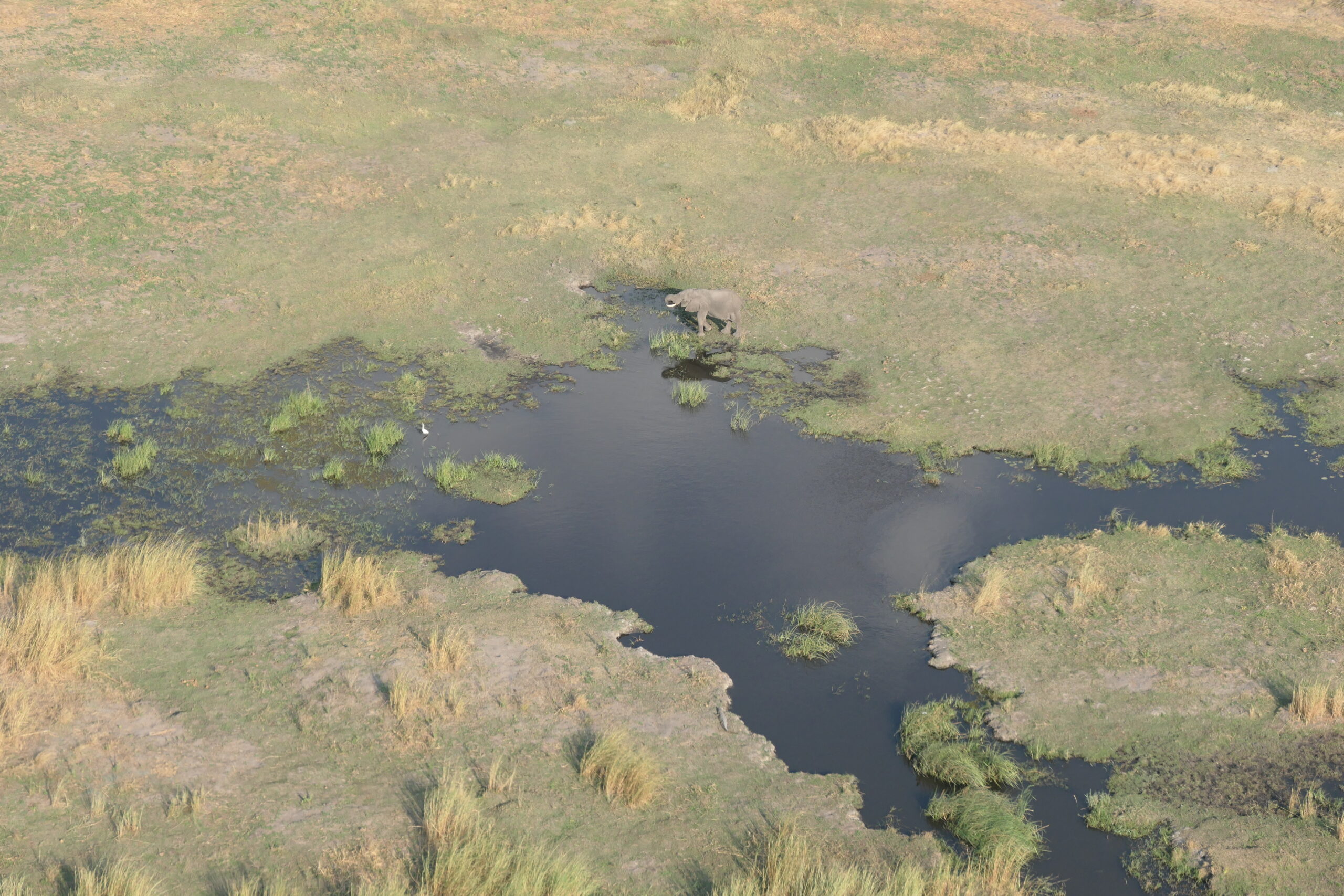
The Okavango Delta has been dealing with drought for the last few years. Water levels have been low, and the floods haven’t been as spectacular as usual. This is for a variety of reasons, including poor rainfall in Angola. To learn more about this complex ecosystem, we highly recommend the National Geographic documentary,
Into the Okavango. It is an interesting and educational film all about the flood waters.
So, what about your 2024 Botswana safari? How are the floods looking?
Things were very dry in the early season (October – November 2023). And there were a lot of fears that this season would be another drought. But El Niño came to the rescue…6 weeks late. Over the past month (December to January), Angola has received abnormally heavy rains—almost twice the level of rain as last year. In fact, it is some of the most rain we’ve seen in 4 years. Even Maun, Botswana (a town just outside of the Delta) has seen 80mm of rain in January so far.
What does this mean for a safari in the Delta? As those rains make their way down the rivers and into the Delta, we’ll see groundwater rise across the region. This should make for some truly beautiful scenery and happy wetlands for the wildlife. We’re truly excited to see what the season brings!
The Best Time To Go On Your 2024 Botswana Safari
So, when should you schedule your 2024 Botswana safari for the best experience with the most abundant animal activity? You want to arrive after the floods arrive, and the Delta comes to life with great migrations of predators and prey. This generally occurs from July until October, which ironically correlates with Botswana’s dry season. There may be little rain, but there’s lots of groundwater.
Going on safari during this time means that animals are crowded into a smaller number of outer-lying dry areas, which creates some incredible wildlife opportunities. When you have a large number of animals forced to share what little land is available (and nowhere to hide), it is the perfect recipe for game-viewing. Plus, with so much nutrient-rich water available, animals migrate hundreds (if not thousands) of kilometers to enjoy the plentiful food and drink.
This does not mean that you shouldn’t visit Botswana any other time. During the green and shoulder seasons (Nov – June), you’ll find vibrant colors, baby animals (it’s a birthing season), and fewer crowds with lower prices. During this time, you’ll not only save money on safari but also have fantastic wildlife opportunities.
Unique Activities to Enjoy the Okavango Delta
During the flood season, when water levels are high, there are a number of different ways to enjoy the Delta. At a “dry” camp, you’ll take game drives and/or walking safaris around the flood waters and enjoy seeing a hugely diverse population of animals.
You can also participate in a water safari, an entirely unique and incredible way to experience the Delta.
Mokoro Safari (Canoe Safari)
A traditional mokoro safari is an enchanting and fascinating way to explore the beauty of Botswana’s Okavango Delta. You’ll journey through reed-lined channels in a dug-out canoe, propelled with poles and guided by local experts.
As you glide in relative silence through the peaceful waters, you’ll enjoy the sounds of nature, from the croak of the smallest frog to the grunts of hippos, bird songs, and watery footsteps. And from the water, everything becomes larger and grander. Trees will tower overhead, elephants will appear as gentle giants, and the landscape will seem to last forever.
Boating Safari
Another type of water activity is the boating safari, which takes place on a motorized boat. This is a classic way to see as much as possible from the water. You’ll explore the vast waterways of the Okavango Delta by going where vehicles can’t.
We offer boating safaris only in Moremi Game Reserve, and they are subject to water levels, weather, and availability. Contact [email protected] to ask about boating during your 2024 Botswana safari!
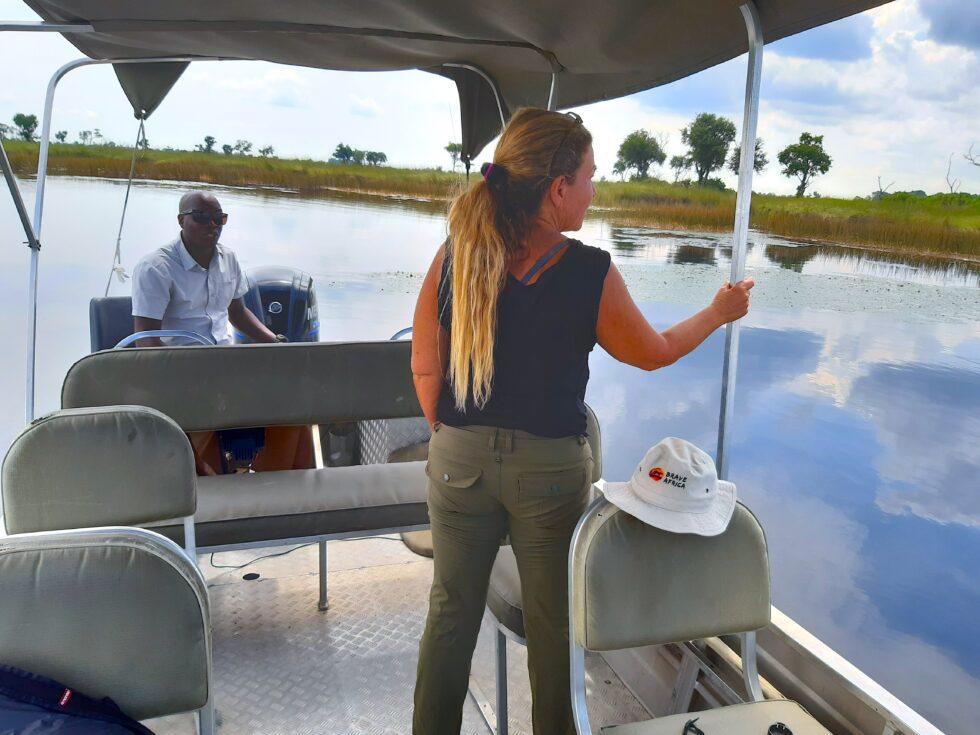
Plan Your 2024 Botswana Safari
Are you ready to plan your 2024 Botswana safari? There’s no better time than now! We still have availability throughout the year with discounts for larger groups and the more nights you stay with us.
So, the time is now if you have always dreamed of going on safari and seeing the Okavango Delta. The 2024 Botswana safari season is shaping up to be an incredible one. Email us at [email protected] to learn more!


